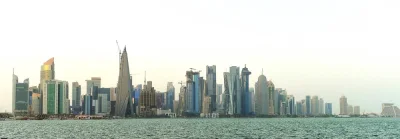Hydrocarbon sector gains are leading to improvements in Qatar’s overall macroeconomic backdrop, government finances and a likely budget surplus in 2019.
Qatar’s growth rates will be lifted by higher hydrocarbon revenues with most analysts predicting average oil price in excess of $70 a barrel in the remainder of this year and in 2019.
Oil prices are expected to increase robustly, with a healthy global demand growth outlook outpacing supply growth, which will continue to experience constraints due to the Iranian sanctions and limited new project start-ups.
As a result of the recent strength in oil prices, QNB recently revised up its forecasts for average annual oil prices to $72/b for 2018 from $69/b and to $69/b in 2019 from $66/b.
Fitch Solutions’ forecasts Brent to average $75 a barrel this year and $80/b in 2019, up from $54.8/b in 2017, which will support confidence in the local economy.
Therefore, Fitch Solutions believe Qatar is set to enjoy an uptick in economic activity in 2018, largely driven by further gains in oil prices.
The uptick in economic activity in 2018, it says, will be a boon for the country’s banking sector.
With credit continuing to flow, liquidity ample and asset quality and profitability robust, Qatar’s banking sector remains “resilient and healthy”.
The credit quality of Qatari bank assets remains strong at present, with non-performing loans (NPLs) equal to only 1.8% of total loans as of December 2017.
Most Qatari banks are well capitalised, with the overall capital adequacy ratio standing at 15.4% in September 2017 (as reported by the IMF), compared to the regulatory requirement of 12.5%, Fitch Solutions said.
Despite the illegal economic blockade on Qatar since June 2017, the deposit growth with local lenders was a buoyant 13.2% in 2017 versus solid loan growth of 8.5%.
With deposit growth outstripping loan growth, the system-wide loan-to-deposit ratio fell back to around 110% and the liquidity environment improved, QNB said.
Many analysts firmly believe Qatar’s stable loan-to-deposit ratios, rising capital adequacy and still-low levels of non-performing loans indicate lower risks to Qatar’s banking sector.
The more supportive and stable oil price outlook beyond 2019 should serve to support the Qatar banking sector’s growth and its subsequent ability to compete on the global stage.
And in terms of national economy, Qatar’s GDP growth is forecast to improve to 2.6% this year from 2017’s 1.6% out-turn.
Capital spending, meanwhile, is set to remain high, fuelled by infrastructure projects linked to the FIFA World Cup 2022, which Qatar is proudly hosting.
At the same time, Qatar’s debt burden is still low on a global comparison, amounting to 45.9% of GDP as at end-2016, allowing the country space its borrowing without risking deterioration in its sovereign profile.
Qatar’s economic fundamentals remain sound as illustrated by its high ratings across all three major ratings agencies – Fitch, Moody’s and S&P.
Qatar has high sovereign credit ratings and is classified within the high grade list of classifications (AA) by global rating agencies, which clearly represents the strength of the national economy and its financial efficiency.

View Point

